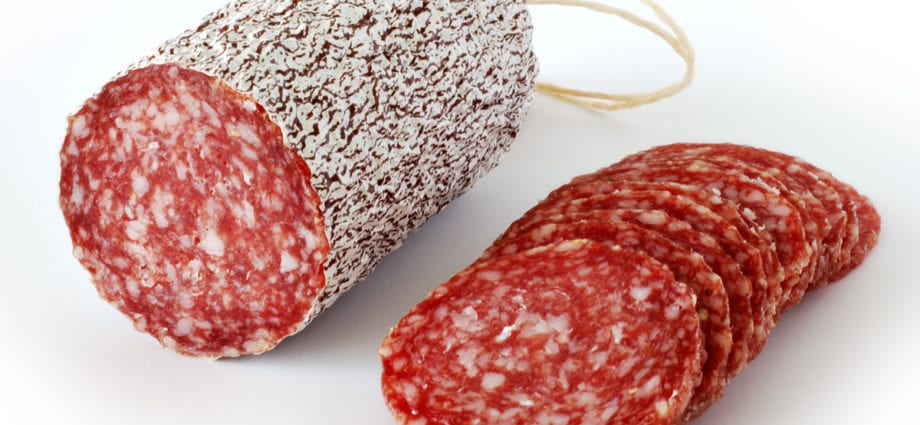Contents
Sausage has long been settled in our menu, and why-that is considered a full substitute for meat. But is there actually meat in sausages?
How much meat is in the sausage?
In sausages produced in our country until the beginning of 70-ies, added the meat, spices, eggs, alcohol or milk.
In 1970-s in sausage the guests made the first change. While production they started to add starch into the sausage. In the late 80s they were allowed to put vegetable protein, color stabilizer, and thickeners.
At the TC – technical conditions – in modern sausage you can add up to 50 and more percent of meat substitutes.
If you want to buy quality sausage, look for on the label for the content.
What kind of meat they use in the sausage?
Usually, the sausage meat is second grade. Top-quality raw materials is the production of expensive smoked sausages.
In cooked-smoked and cooked sausages THAT allowed too contain the meat of second grade and products technical deboning – cutting meat with bone cartilage, bone fragments and lots of water.
In addition it is not forbidden to add any sausage-fat, high-fat pork skin and bone broth.
Carefully read the ingredients listed on the packaging of sausage. It should clearly indicate the origin and grade of meat.
What is in the sausage except for the meat?
That’s what added to the composition of cooked and cooked-smoked sausages, manufactured in the majority of countries.
Vegetable protein generally derived from soy. Often it can be found in cooked meats and sausages. In cheap varieties they replace a large part of raw meat. There are completely “vegetable” sausages, which have only the color and smell like real ones.
Starch also plays a role of a filler. It helps to make the sausage mixture more homogeneous and dense. The excess starch in the sausage easy to identify, turning a thin slice of sausage in half. If starch in the product a lot, the slice breaks in half, and the place of the fault you will see small grains.
Another thickener – the carragh. It is a polysaccharide, related to pectin. It is derived from red algae, called “Icelandic moss”. The carragh absorb much liquid from the meat and helps to make it denser and more uniform.
The color stabilizer sodium nitrite gives the salami a delicious pink color by the reaction with iron. Without it, thermally processed meat would be the usual gray color.
In cheap varieties of sausage, produced according to specifications, can be present meet preservatives, antioxidants, flavors and other not stipulated by standard Supplement.
All the additives the manufacturer must state on the label. If you find a product with unfamiliar names, and the sausage looks suspiciously bright or smell very strongly you should abandon it, even if the price seems very attractive.
Remember
There is no sausage just from meat, it is often the conditions of production allows the addition of 50 per cent of substitutes. When buying sausages carefully study the label to get a quality product with the permitted by low additives.










